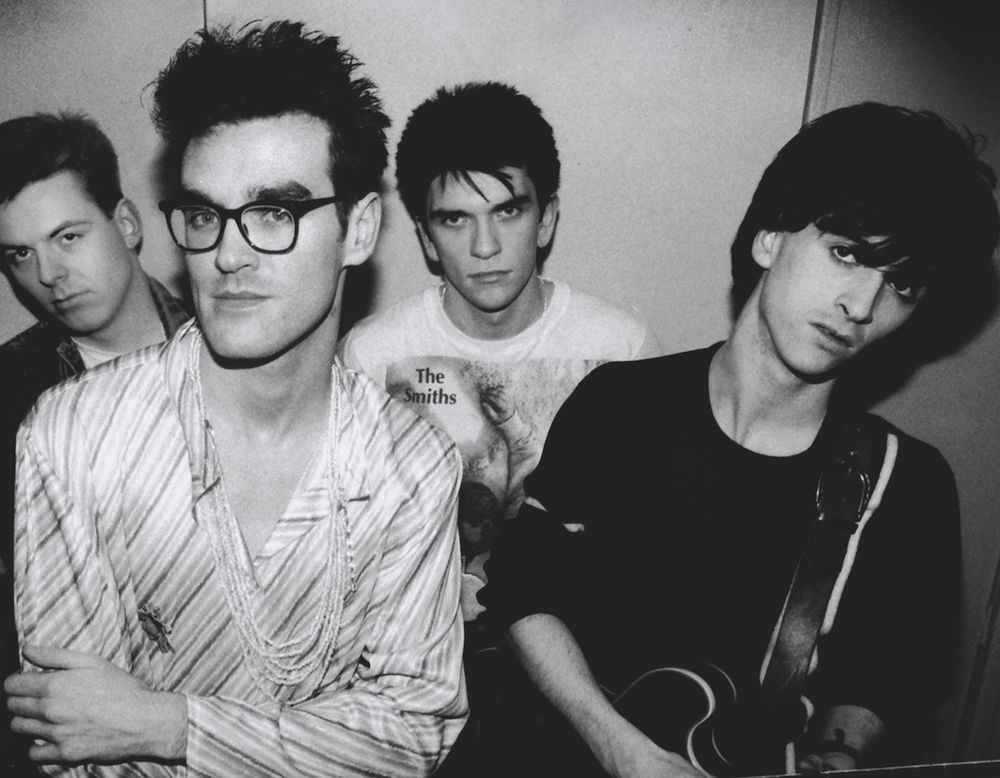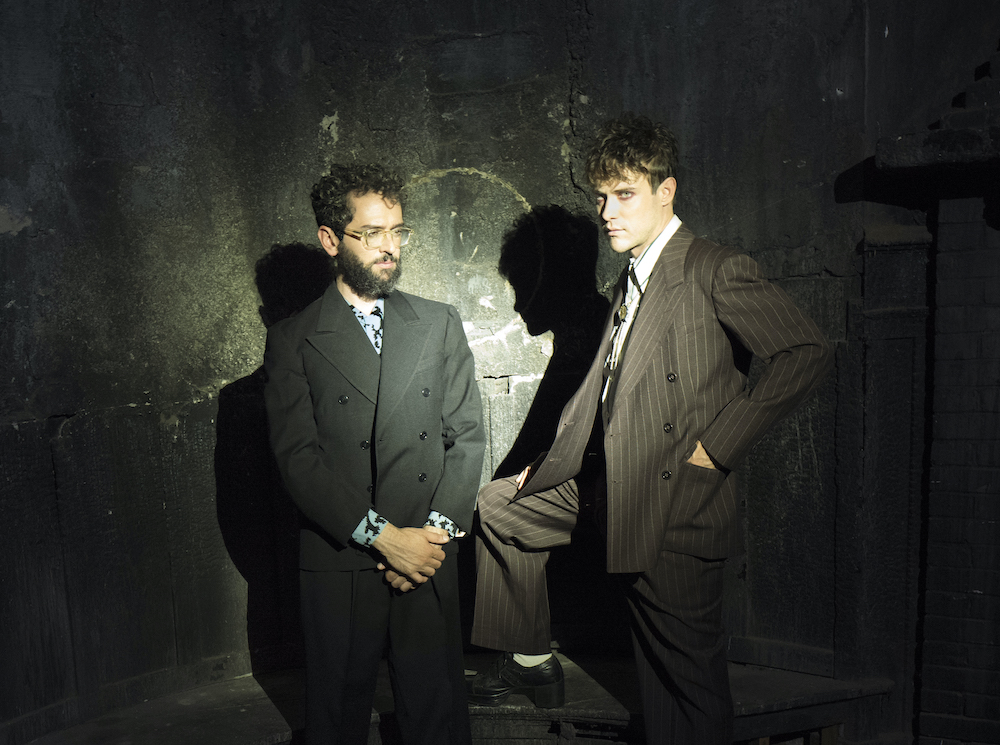It’s almost a cliché to call something the "new Chinese Democracy" when referring to an oft-delayed album, but if we have one in 2018, it’s Chromatics’ long-awaited Dear Tommy. First announced in 2014, the assumed follow-up to 2012’s noir masterpiece Kill For Love has been on the minds of fans for so long that it’s reached mythic levels. There have been twists and turns in the story of Dear Tommy; from an initial barrage of well-received singles, to years gone by without updates, to 2017 reports that the album was nearly complete when frontman and creative mastermind Johnny Jewel trashed it all to start over after a near-death experience. Whatever the case for the long delay, one thing is for sure: the Dear Tommy hype has not died down.
What is it that makes the promise of Dear Tommy so alluring? We can start by considering Chromatics’ slow and steady rise. Born as guitarist Adam Miller’s solo project, the band underwent a few lineup changes and didn't exactly nail down a signature sound in the early years. Chromatics’ first two records are relics of a different era. Jewel is only really present as a producer and multi-instrumentalist on their debut LP, Chrome Rats Vs. Basement Rutz, and its follow-up Plaster Hounds. Singer Ruth Radelet — whose voice is the band’s present-day calling card — didn’t join Chromatics until their third album. The music of the band’s earlier releases wasn’t exactly the dreamy, ‘80s electro homage that we associate with Chromatics today. Instead, it was a lo-fi, art punk flurry. By the end of this era, Miller and then-bandmate Lena Okazaki were beginning to write more electronic music, a sign of what would come.
Chromatics’ two most recent albums were critically acclaimed showstoppers. 2007’s Night Drive was the first record to feature the current quartet of Miller, Jewel, Radelet, and Nat Walker on drums. The LP capitalized on the burgeoning electronic pop scene of the mid-2000s to tell a cohesive tale of a night in the city. Jewel’s idiosyncratic approach to composition wasn’t ironed out on Night Drive, which clocks in at over an hour. His meticulous obsession with structure and usage of disorienting repetitive motifs were filtered through pop, rock, and synthetic electro. The resulting album is among the best examples (if not the best example) of the new millennium’s obsession with ‘80s nostalgia. Night Drive was an accomplishment that critics couldn’t heap enough praise onto.
Five years later, Kill For Love took that nocturnal sound and made it more accessible and epic in turn. The latter could not have arrived at a more perfect time: the Italo disco vibe that the band co-opted was in vogue following the massive success of Cliff Martinez’s 2011’s Drive soundtrack, which Jewel worked on. From the Neil Young cover that kicks off the record, through tracks like “Candy” and “The Page,” the record showed that behind woozy synths and ethereal vocals was an honest-to-goodness band, helmed by a modern genius.
That Jewel found his counterpart in singer Ruth Radelet is nothing short of miraculous, because her vocals steal the show on both Kill For Love and Night Drive. The ‘80s-tinged dreamscapes serve as the perfect backdrop for songs about melodrama, melancholia, and mischief. To follow Radelet’s lyrics is to dive into a world of depression and ecstasy, emotions that fall on opposite ends of the spectrum. Even on the songs that Chromatics have released since Kill For Love, like “Camera” or the band’s avalanche of “Girls Just Wanna Have Fun” covers from 2016, Radelet has only stepped further into the spotlight.
Focusing on that mythology tends to overshadow the fact that Chromatics are among the most consistent bands working today. They are committed to a very specific mood and because of that they rarely, if ever, misstep. When they do, it’s usually because they overshot the mark, not under-delivered. A prime example comes in the form of Drumless, an EP re-imagination of Kill For Love, which, true to its title, features absolutely zero drums. It’s a bold move, in line with Chromatics’ MO, but it also reflects their worst impulses, like breaking down sonic elements to their most minimalistic form without clear intention, making the songs sound scattered and shapeless.
Picking out the best of the best in the Chromatics catalogue wasn’t easy to do with a band that defines such a specific sound. A wide swath of the Chromatics catalog features aurally similar tracks that can best be described as heading west into the darkness, away from the approaching dawn in search of the night’s bold mysteries. There are certainly highlights, though, and these 10 songs take the patented Chromatics formula and tweak it just enough to stand apart.
10. "Running Up That Hill" (from Night Drive, 2007)
Of all of the noteworthy covers of Kate Bush’s 1985 classic, “Running Up That Hill,” Chromatics’ rendition might be the one that most closely matches the original’s sensuality. Partly because of Radelet’s vocal abilities, and partly because of the smart decision to not stray from the signature Chromatics sound, “Running Up That Hill” sounds like a counterpart to the original, more than a tribute. If Kate Bush demands your attention during a passionate fight, Radelet and co. are having a drugged-out conversations at five in the morning, the sky ablaze with the coming light. The metronomic drum machine propelling the song forward allows the repeating synth part and that iconic riff to take center stage without ever getting lost.
9. “I Can Never Be Myself When You're Around” (2015)
“I Can Never Be Myself When You’re Around” was released in 2015, when the promise of Dear Tommy still felt somewhat fresh. It’s supposed to be included on the forthcoming album. This song carried that Chromatics vibe, retrofitted it for an even moodier dancefloor. “I Can Never Be Myself When You’re Around” is more kinetic than anything on Kill For Love, and seemed to hint at a new future for Chromatics, one where they could live alongside poppier acts of the era. Alas, the long wait for Dear Tommy has somewhat dulled the exhilaration that came with “I Can Never Be Myself When You’re Around," but don’t let that take away from what is an evocative vocal performance from Radelet and the band’s swelling instrumentals. If this is what Dear Tommy will bring, then the wait really will be worth it.
8. “Shadow” (2015)
Riding on the momentum of “I Can Never Be Myself When You’re Around,” Chromatics released “Shadow” (another supposed Dear Tommy single) later in 2015 (it’s unclear whether the song will appear in its current form once the album is released). The version we do have sees Chromatics striving for something that they do not usually concern themselves with: accessibility. The synths are scaled back just enough, the drums are basic, the melodies uncomplicated. It’s the type of song you could use to introduce someone to the band, something they might choose to play on late-night TV.
Of course, because this is Chromatics, when they did play it for TV, it was for Twin Peaks: The Return. Even the band’s poppiest inclinations have to be filtered through some pretty weird impulses. No one’s complaining though; the “Shadow” of Twin Peaks fits that show’s hazy aesthetic to a T.
7. “I Want Your Love” (from Night Drive, 2007)
Simply put, “I Want Your Love” is a dancefloor magnet. The third track on Night Drive exudes intimacy; the beat pushes the listener towards other human beings in the hopes of finding some semblance of closeness. The piano bangs while the drum recalls the discos of yore, when 6AM was just another hour to sweat out the world’s cruelty. You wouldn’t throw many unremixed Chromatics track on a sex playlist, but “I Want Your Love” is foreplay defined, calling lovers towards each other before the night ends.
6. “Kill For Love” (from Kill For Love, 2012)
The titular track of Chromatics’ best and most famous LP is a four minute distillation of why this band has such a rabid fanbase. Fuzzy guitar chords that give way to twinkling fret runs? Radelet’s voice giving shape to lyrics both romantic and twisted? Synths upon synths upon synths? Check, check, and check. If starting your double LP opus in the dark corners of the city with a Neil Young cover (more on this in a bit) is a bold move, circling back with a title track that re-centers expectations is just good business.
Luckily, with the Chromatics you can always expect something tightly-created and life-affirming: even as Radelet sings of stagnation, drug usage, and attempted suicide, you just want to inhabit the world created in “Kill For Love.” It’s a macabre place, but when it sounds this good, you don’t want to leave.
https://youtube.com/watch?v=c0mxXrHowHQ
5. “In The City” (from In The City, 2010)
In the five-year period between Night Drive and Kill For Love, Chromatics released an EP that could live comfortably alongside their full-lengths. In The City is a seven song collection and each track deserves consideration, none more so than the seven minute title track that opens it. “Shining violence, shining victim,” is Radelet’s battle cry here, her voice juxtaposed against yet another metronomic backing track. There’s not much to say that Radelet doesn’t say herself, but as an opus to everything that makes humans flock to urban areas and also retreat from them, it serves as a powerful thesis statement for Chromatics. In the cities of Chromatics’ imagination, muggings and dancing coexist, and there’s always beauty in the darkness that shrouds metropolis every night. “Concrete river, I see your face,” Radelet sings, melding the natural world with urban grit.
https://youtube.com/watch?v=tFOxribt3kA
4. "The Page” (from Kill For Love, 2012)
Taken as a whole, the Chromatics catalog can be described as dreamy or woozy, but on “The Page,” the band gives a rousing synth rock performance, complete with chunky guitar riffs and a propulsive drum machine track. It sounds like Chromatics, but it also sounds like the band rebelling against its own mythology. Ruth Radelet’s vocals are pushed towards the front of the mix on the verses before retreating into itself on the chorus, as she sings about cities and ashes and dreaming of places where lovers have wings. “The Page” is a thrilling conclusion to the first quarter of the expansive Kill For Love, and one of the last muscular performances on the record before it gives away to the soundtracks of nights lost in the city of dreams.
https://youtube.com/watch?v=wKN61-4KlAk
3. "Tick Of The Clock” (from Night Drive, 2007)
If “Shadow” is Chromatics leaning into their poppiest selves, then “Tick of the Clock” is the exact opposite. At almost 16 minutes, it’s the longest song in the band’s catalog, and yet it almost feels like it’s not a song, but rather an EP someone forgot to cut into pieces. Throughout the track, the same percussion and synth combo acts as the heartbeat, while each section of the song layers itself over it to create a journey into the darkness. That there is the sound of a ticking clock shouldn’t be too surprising, given the song’s name, but what is surprising is how little you notice it until it’s all you can hear (usually at the moment of silence that happens at the end of each suite). “Tick Of The Clock” is barely there for a good chunk of its duration, but that’s what makes it thrilling; you forget what you’re doing, particularly if you listen with good headphones, and instead you’re left with this weirdo band’s best attempt at classic rock excess.
Despite that being the main appeal of the track, it’s also worth noting the film edit version cuts it down to a still-girthy five minutes, with less dead space but more jarring tonal shifts. The lack of vocals doesn’t put you in as much of a lull at a third of the duration, but its appearances in Taken 2 and especially in Drive validate the decision to pare down genius into its rawest form.
2. "Into The Black” (from Kill For Love, 2012)
In 1979, Neil Young was in a bad place, fighting feelings of irrelevance and a world passing him by, one that would soon explode into the New Wave and punk festivities of the 1980s. That’s when he recorded “Hey, Hey, My My (Into the Black),” a track that comes to grips with his experiences at the close of his first full decade as a musician. When it came time for Johnny Jewel to start off what would become his signature record, he made the choice to cover the track, retitling it simply “Into The Black” and turning a contemplative guitar ballad into a roaring fireball of electronic euphoria.
The signature riff that opens the track, and the album, is the highlight, but what most excites about “Into the Black” is the interplay between Radelet’s vocals, which are much cleaner than Young’s, and the anxiety created by the repeating synth line at the back-end of the song. Time is running out, we’re all fading to black, but there’s joy to be found in a slow burn.
https://youtube.com/watch?v=rSycSBYHitc
1. "Cherry” (from After Dark 2, 2013)
Not content with releasing Kill For Love in 2012, Jewel snuck his band’s best song onto his record label’s After Dark 2 compilation. Though that Italians Do It Better release came out in 2013, Jewel smartly released “Cherry” in the final wisps of the previous year, riding the momentum of a year well spent. “Cherry” is titanic because of how it weaves in every asset of a Chromatics song into one beautiful package. Radelet’s vocals are at their most pop-friendly, tackling lost love and the arduous process of moving on without your other half. Meanwhile, the music takes on a menacingly defeated tone; it’s all swirling guitars and rumbling bass lines, with the synth line making a mess of itself just enough to disorient without going off the rails.
The beat on “Cherry” is so good that it was borrowed by ScHoolboy Q the following year for his own massive “Man Of The Year.” That it works as a synth-pop daydream AND a mainstream hip-hop banger speaks only to the heights that Jewel and co. reached while creating it. Jewel seems to have banked on the popularity of "Cherry," and in 2017 he put out a one-off deluxe release featuring both an a cappella and an instrumental version of the track. In every iteration, it’s a beautiful song, and a worthy topper to a shimmering, truly excellent catalogue.
https://youtube.com/watch?v=CjQ2jGUNSck






